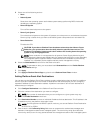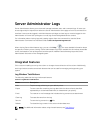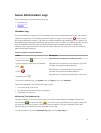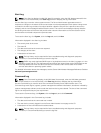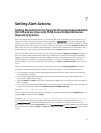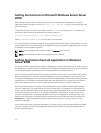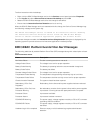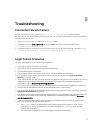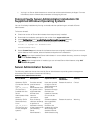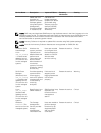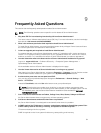Software updates are done through an SSH session and secure FTP and root level permissions/
credentials are required for this discrete action and asked for when the action is set up or requested.
Credentials from the discovery range are not assumed.
ITA communicating with Windows systems:
For servers (systems running Windows Server operating systems), the system may be configured with
either or both of SNMP and CIM for discovery by ITA. Inventory requires CIM.
Software updates, as in Linux, are not related to discovery and polling and the protocols used.
Using Administrator level credentials asked for at the time the update is scheduled or performed, an
administrative (drive) share is established to a drive on the target system, and files copying from
somewhere (possibly another network share) is done to the target system. WMI functions are then
invoked to execute the software update.
As Server Administrator is not installed on Clients/Workstations, so CIM discovery is used when the
target is running the OpenManage Client Instrumentation.
For many other devices such as network printers, SNMP is the standard to communicate with
(primarily discover) the device.
Devices such as EMC storage have proprietary protocols. Some information about this environment
can be gathered from looking at the ports used.
10. Are there any plans for SNMP v3 support?
No, there are no plans for SNMP v3 support.
11. Does an Underscore character in the domain name cause Server Admin login issues?
Yes, an underscore character in the domain name is invalid. All other special characters (except the
hyphen) are invalid too. Use case-sensitive alphabets and numerals only.
12. How does selecting/deselecting 'Active Directory' on the login page of Server Administrator
impact privilege levels?
If you do not select the Active Directory check box, you will only have access that is configured in
the Microsoft Active Directory. You cannot log in using the Extended Schema Solution in Microsoft
Active Directory.
This solution enables you to provide access to Server Administrator; allowing you to add/control
Server Administrator users and privileges to existing users in your Active Directory software. For
more information, see "Using Microsoft Active Directory" in the Server Administrator Installation
Guide available at dell.com/openmanagemanuals.
13. What actions do I follow while performing Kerberos authentication and trying to login from Web
server?
For authentication, the contents of the files /etc/pam.d/openwsman and /etc/pam.d/sfcb, on the
managed node, must be replaced with:
For 32-bit:
auth required pam_stack.so service=system-auth auth required /lib/security/
pam_nologin.so account required pam_stack.so service=system-auth
For 64-bit:
82



